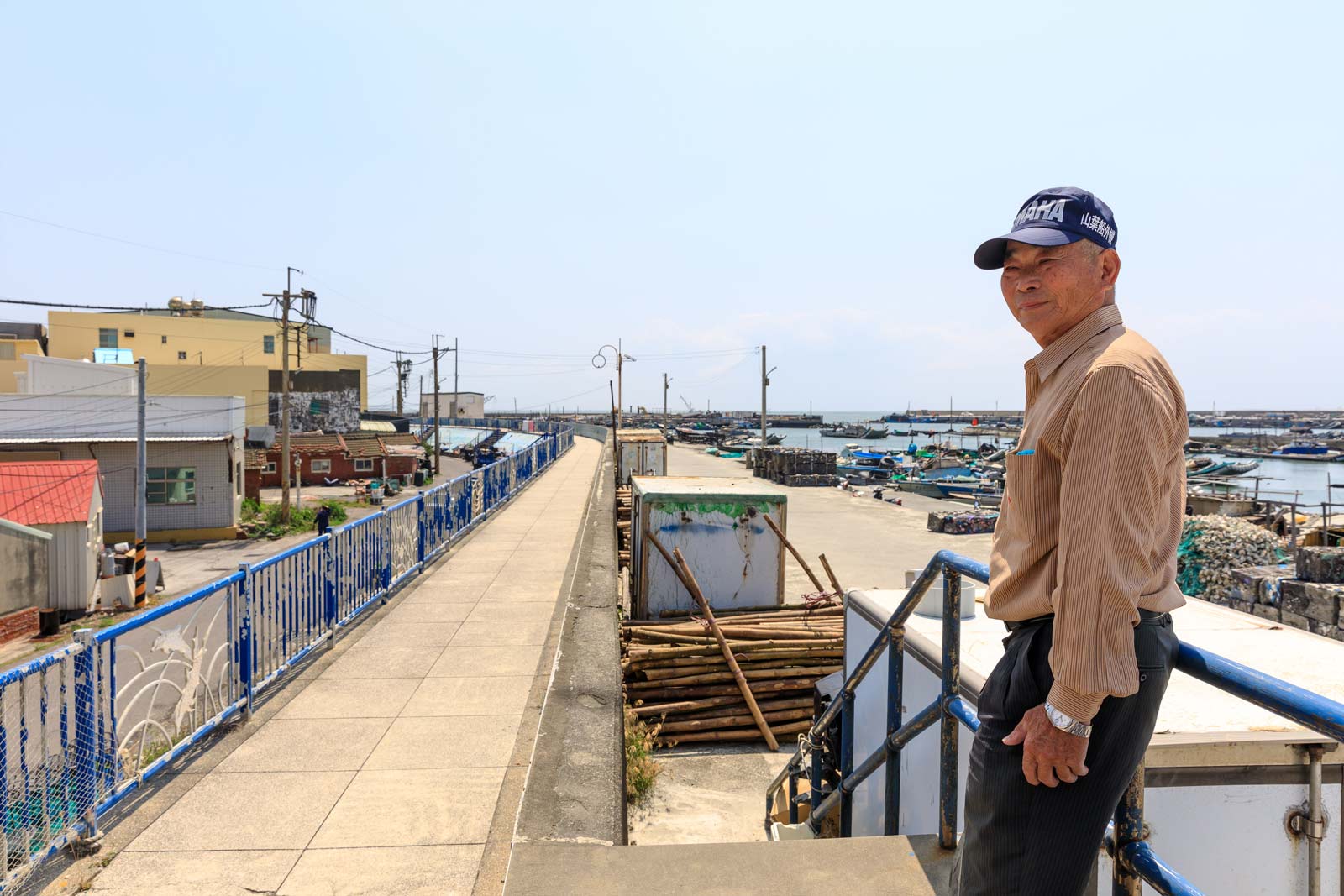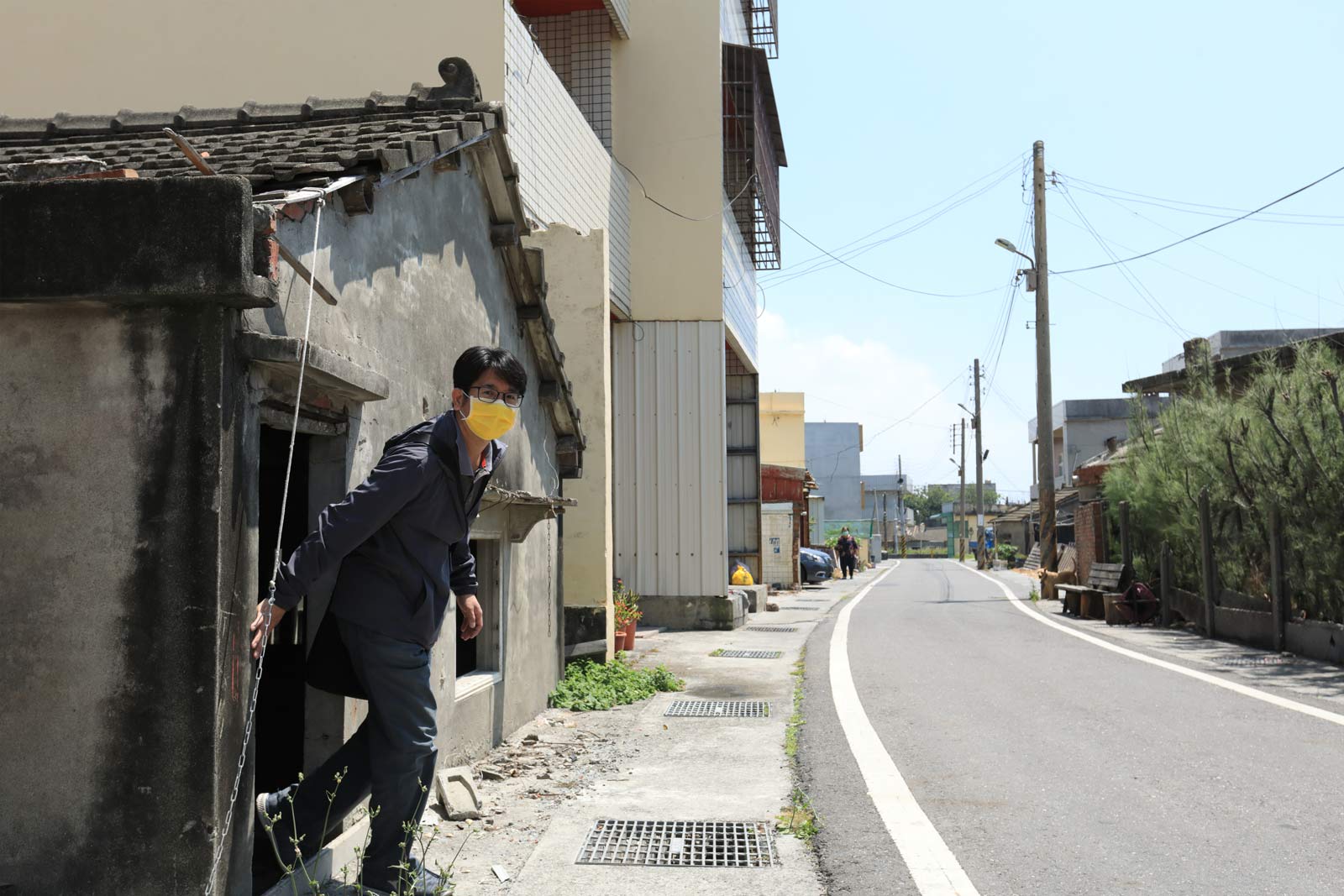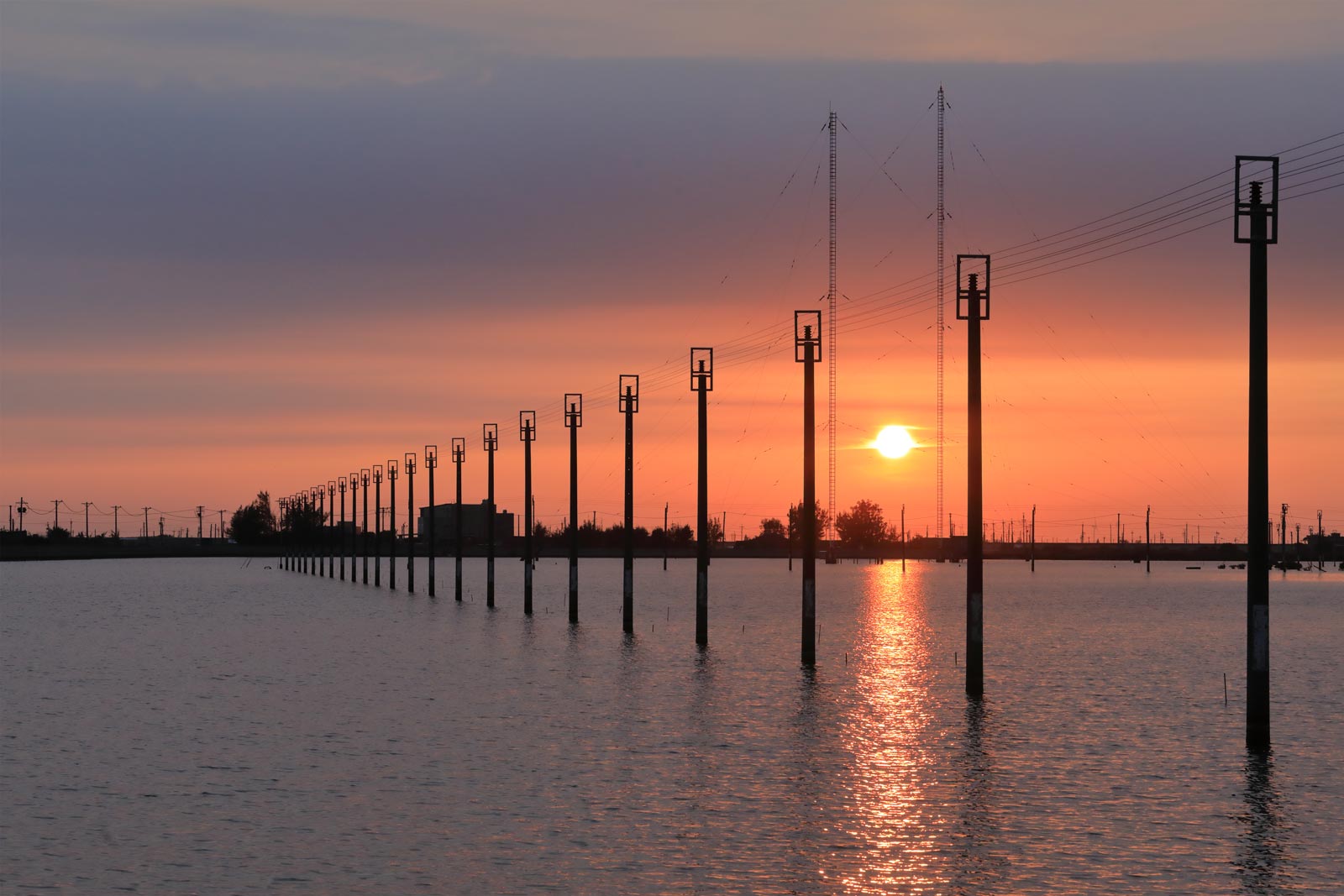Taiwan’s first climate refugees

Source:Chien-Ying Chiu
The low-lying communities along the western coastal corridor of Taiwan could become the island's first victims of the climate crisis. How can they cope with the imminent threats?
Views
Taiwan’s first climate refugees
By Kai-yuan TengFrom CommonWealth Magazine (vol. 750 )
Taitzu Village, on the border with Chiayi in Yunlin County, recently completed a new coastal seawall project.
Lin Ou, a retired oyster farmer in his eighties, resides in the village abutting the harbor cove. As a youth, Lin piloted a raft along the coast, cultivating oysters.
 Lin Ou, a retired oyster farmer (Source:
Chien-Ying Chiu)
Lin Ou, a retired oyster farmer (Source:
Chien-Ying Chiu)
Looking at the seawall, his voice was full of concern. “Every month, Taitzu Village is hit with two tidal surges, when the seawater swells to the top of the seawall. The water level continues to rise here, the land keeps sinking, the water gets higher year after year…In 30 years our village will be submerged.”
It is already the second seawall level erected at Taitzu Village, yet it is not enough to allay his fears.
Villagers fear submergence
And Lin’s fears are not entirely unfounded.
Lien-Kwei Chien, professor of ocean engineering in the Department of Civil, Hydraulic and Ocean Engineering at National Ocean University, has conducted years of research on Taiwan’s marine coasts. In 2017, citing data provided by the United Nations Intergovernmental Panel on Climate Change (IPCC), he extrapolated that Taitzu Village will be in the weakest position to respond to change and on the highest alert considering its low-lying position, as well as an aging population, low resident income level, and limited local government budgetary strength, in the face of a sea level rise of nine to 22 centimeters along the Yunlin coast, compounded by multiple disastrous factors including tidal surges, land subsidence, and coastal erosion.
According to Chien’s research, towns and villages at the highest alert levels will be uninhabitable in the future. Accordingly, he advises residents to evacuate.
Taitzu Village is not the only village threatened by climate change in Taiwan.
The regions of Changhua, Yunlin, Chiayi and Tainan on Taiwan’s western coast all face the same issues, including low-lying topography, land subsidence, and farming and fishing communities living in close proximity to the coast. Accordingly, the residents along the western coastal corridor could bear the brunt of climate change and become the first victims.
Taihsi brick half buried underground

Over the past 30 years, Taihsi Township has had some of the most severe land subsidence in all of Taiwan, with accumulated sinking exceeding two meters.
Walking around the village, half of one early-period home has sunk underground, shifting the windows to chest level. It has become a condemned, unlivable relic.
With no large water storage facilities in the Yunlin region, the local farming and aquaculture industries have had to draw their water from underground wells for years.
Estimates put over 100,000 underground wells around Yunlin; in some towns and villages there is one well for every two or three people.
And even though underground wells have been placed under local administrative management in recent years, it will be a tough task to reverse the subsidence.
When a house that is buried halfway into the ground encounters flood waters, given its low-lying position, it becomes a cistern.
Seawall burst by typhoon, radio station antennas in flooded field
We don’t have to wait until 2050 to see the impact of climate change and extreme weather on Yunlin.
Hukou Village, about a 30-minute drive south of Taihsi, is already a victim of extreme weather.
In 1986, Typhoon Wayne made landfall at the mouth of the Zhuoshui River, causing severe devastation to the Yunlin, Changhua, Nantou, Chiayi, and Penghu regions, including nearly 40 deaths and the total or partial collapse of 4,000 houses.

This typhoon forever changed the fates of local villagers.
The wetlands near the home of Wu Li-hua, chief administrator of Hukou Village, have become a wild bird paradise. However, three radio station antennas rise up out of the water, and a row of telephone poles supplying power for the local radio station is submerged.
The antennas for the Radio Taiwan International local Yunlin affiliate used to stand on solid ground. Now, antenna maintenance crews need to take a raft to access them.
After Typhoon Wayne, the seawater pooled to form wetlands, and the resultant salinization rendered the fields uncultivatable.
Professor Ya-Hsuan Liou, chairperson of the Department of Geosciences at National Taiwan University, notes that extensive salinization of land and underground water in the coastal region of Yunlin has made the land difficult to tend.
As a result, local farmers have been forced to choose other ways to make a living.

Octogenarian Wu-Lee Chia-tsai, a lifelong resident of Hukou Village, was a farmer until Typhoon Wayne came along. After the typhoon, she was forced to dig a pond and become a fish farmer, raising clams, milkfish, and shrimp.
However, aquaculture was not easy for her, and she experienced great hardship in her finances and life.
Standing next to a fish pond about one hectare in size, she points to dead shrimp at the bottom of the pond and lets out a string of laments, saying “Nothing grows in the fields, and the oyster harvest is poor as well. All the young people have left.”
Wu-Lee’s husband and his three brothers once all lived together in Hukou. But all three of his other brothers have since left to make a living in the north of the island, leaving them as the only ones holding on at home.
Wu Li-hua relates that population drain and aging have hit Hukou Village hard. In the past, each grade of the village elementary school had at least two classes. Yet in recent years it has not been uncommon for the school to be unable to meet the minimum number of two students needed to form a class. “There’s no fifth grade or sixth grade,” she says. Out of the 200-plus households in the village, 20 of them are low- to mid-income families.
As defined by the United Nations, the term “climate refugee” refers to someone forced to leave their home because climate change has rendered the existing environment unlivable.
According to projections by the Ministry of Economic Affairs Water Resources Agency, Yunlin’s levees can withstand a tidal surge, but if a total breech should occur, or the coastline recedes or the land sinks, a number of villages in the Mailiao, Taihsi, and Kouhu regions of Yunlin could end up totally submerged.
Climate refugees are not far off in Tuvalu, but right here along Taiwan’s coast. “We should carefully consider the course of action for areas like those along the Yunlin coast mired in land degradation and developmental stagnation,” says Lien-Kwei Chien.
Quo vadis?
Over the last few years, plans have been made to develop the Hukou wetlands, as well as the Yiwu wetlands that were similarly submerged by Typhoon Wayne, into conservation zones and tourism development areas.
However, there is local opposition to those plans. Further, some flooded agricultural land is being leased via ecological subsidy arrangements to landowners for keeping land fallow from the Forestry Bureau of the Council for Agriculture, and is no longer being developed and utilized.
Lee Chien-hung, president of the Kouhu Township Agricultural Committee, breeds bass and eels in the vicinity of the wetlands. He says that local residents do not oppose plans to turn the wetlands into conservation zones, and that they support the development of tourism. However, with aquaculture the only remaining local industry, they fear that a rise in the bird population would result in the birds consuming the fish fry, causing losses to fish farmers.
“One eel fry costs NT$100, and one wild bird could consume NT$10,000 worth of hatchlings in a single night,” relates Lee.
Another hotly debated question locally is whether to allow the installation of solar panels on abandoned land.
Local residents are still divided. Yunlin County Assemblyman Huang Wen-hsiang relates that residents who continue to grow crops or farm fish in aquaculture are concerned that wastewater runoff from the washing of solar panels could impact water quality. This, he says, is the reason for their opposition.
However, a subset of residents also hopes to revitalize abandoned land and improve the economy.
Still, Professor Chien, who is currently helping the government formulate a Coastal Management Plan, admits that given current measures, in the face of worsening climate change challenges, the management and development of degraded coastal land will be “very, very difficult.”
What can be done? Chien relates that, judging from Japan’s experiences, conventional engineering approaches like building higher seawalls would likely be insufficient to resist climate change and extreme weather. Accordingly, thought must be given to ways in which we can coexist with water, like Venice, and to strengthen monitoring of the coastal environment.
Meanwhile, the utilization of national land going forward should include analysis of potential disasters to reduce their impact.
Along Taiwan’s west coasts, the assumption that humans will always overcome nature is no longer applicable.
Have you read?
- How a Taiwanese company is trying to save the ocean
- How can Cheng Kung University reach carbon neutrality in 20 years?
- Turning used cardboard lunch boxes into fuel? Paper mills hold the secret weapon
Translated by David Toman
Edited by TC Lin
Uploaded by Ian Huang






